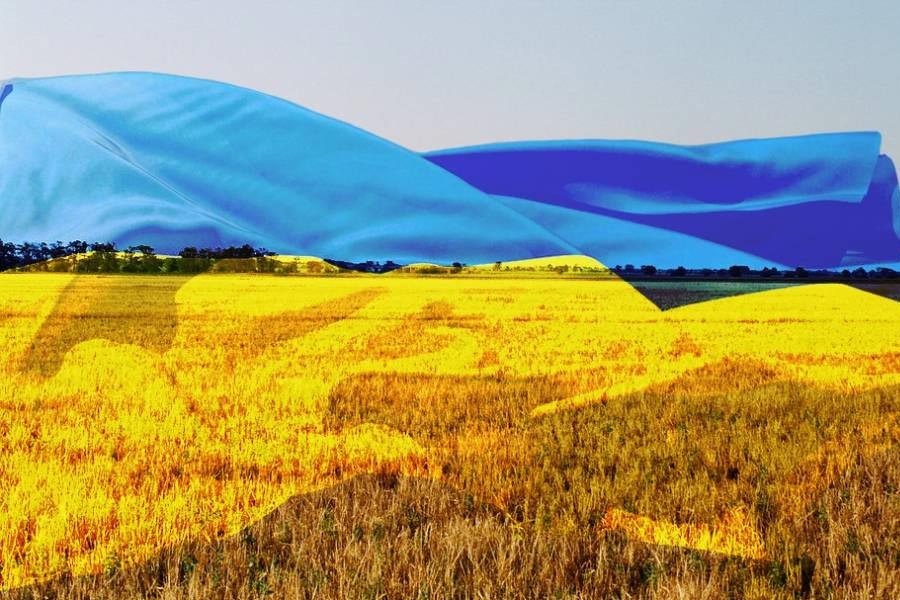For more than 20 days, a war on an unprecedented scale has been going on in Europe. russia started this war, expecting to take control of key Ukrainian cities and break down the resistance in just a few days. It has become evident that the invader’s initial plan has failed, and the world is likely to face more long-term and large-scale civilizational phenomena, including those at the edge of the spheres of food security and the environment. Specifically, considering Ukraine’s role in the world’s food supply.
Revealing the possible impact of the war in Ukraine on food security and the environment, our partner, Ukrainian Nature Conservation Group (UNCG), performed a rapid assessment of agricultural areas that will likely not be sown due to hostilities, or will likely be temporarily inaccessible. Thus, a large part of the cultivated areas are occupied, some of them are actually damaged due to military operations and contaminated with explosion products, which makes these lands no longer suitable for the cultivation of food crops. UNCG also reported that russian occupational troops are deliberately destroying Ukrainians’ agricultural equipment, exacerbating the expected food crisis. We also emphasize that even after the liberation of the occupied territory, sowing will not be possible until total de-mining is performed.
Ukrainian Nature Conservation Group identified, that the zone of risk farming in Ukraine, which may not be feasible to conduct a sowing campaign, or inaccessible, is 202600 square kilometers, which is approximately 34% of the total land area of Ukraine. UNCG identified this area based on a comprehensive cartographic summary of the military operations and the location of russian occupation troops from local users and taking into account the buffer zone of the frontline territory.

Map of Ukrainian agricultural landscapes in the context of russian military aggression. The darker color shows the agricultural landscapes of Ukraine, which are located within the zone of risk farming. Source: Ukrainian Nature Conservation Group
As it stated in UNCG assessment, there are 110053.6 sq. km of arable lands located within the risk farming zone in Ukraine, which is 30% of all arable land in the country. (according to the land use map, 365389.1 sq. km of such land is allocated in total). UNCG used a land cover raster map by Copernicus Global Land Service for this analysis.
Mykhailo Amosov, the Head of Department of Industry Greening of Ecoaction NGO, explains: “The sowing campaign in Ukraine is under threat as well as the world’s food security because of russian aggression in Ukraine.Blockade of Ukrainian seaports by russian warships and the crop export ban are exacerbating the deficit of grain on the food market. For instance, Egypt with its 100 million citizens procures a major part of wheat in the first quarter of the year and 10% of it is Ukrainian wheat. Egypt’s Government should find alternatives rapidly, and even this measure will not help to keep the price of wheat low.So, urgent aid from the World community to stop the russian aggression in Ukraine will not only save the lives of Ukrainians, but also save the most vulnerable countries and people from famine.
Beyond stated numbers, we must consider that Ukraine is under martial law and will forward domestic products to consumers within the country, so we believe that the decline in exports of food products will be more significant than the percentage of inaccessible arable lands.
The deliberate actions of russia to reduce Ukraine’s agricultural potential is primarily a hit to Europe, which exports more than 32% of all Ukrainian agricultural products. And this could be most devastating for poor countries and populations that will not afford the new food price.
The large-scale hostilities now taking place in Ukraine are setting a precedent in the modern history of civilization. Whether in the social, cultural, economic and educational dimensions or in the balance of agrarian economy and nature. We and our partners in UNCG will continue to carefully analyze aspects of ongoing agrarian-natural transformation and continue to perform respective modelling and analysis.
Contacts for additional information:
am@ecoact.org.ua

